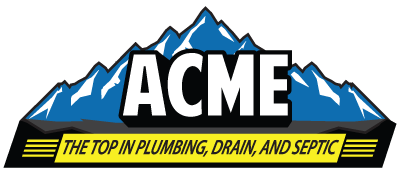Dealing with Clogged Drains: DIY Solutions and When to Call a Professional
Clogged drains are a common and frustrating household issue that can disrupt your daily routine. Whether it's a slow-draining sink, a backed-up shower, or a toilet that refuses to flush properly, clogs can occur in various parts of your plumbing system. Understanding how to address minor clogs with DIY solutions and recognizing when it's time to call a professional plumbing service like ACME Plumbing can save you time, money, and stress.
DIY Solutions for Clogged Drains
Boiling Water One of the simplest and most effective methods for clearing minor clogs is pouring boiling water down the drain. This works particularly well for clogs caused by grease, soap scum, and other organic matter. Be sure to pour the water slowly and in stages to allow it to work its way through the clog.
Baking Soda and Vinegar A natural and environmentally friendly solution, the combination of baking soda and vinegar can help break down clogs. Start by pouring a cup of baking soda down the drain, followed by a cup of white vinegar. Let the mixture sit for 15-30 minutes, then flush with hot water. The chemical reaction between the baking soda and vinegar can help dissolve the clog.
Plunger A plunger is a versatile tool that can be used to clear clogs in sinks, showers, and toilets. Ensure there is enough water in the fixture to cover the plunger's cup, then use a vigorous up-and-down motion to create suction and dislodge the clog. Repeat as necessary until the drain is clear.
Drain Snake Also known as a plumber's snake or auger, this tool is designed to reach deeper clogs that a plunger can't dislodge. Insert the snake into the drain and rotate the handle to break up or retrieve the clog. Drain snakes are especially useful for removing hair and other debris from shower and bathroom sink drains.
Dish Soap and Hot Water For kitchen sinks clogged with grease and food particles, dish soap and hot water can be effective. Squirt a generous amount of dish soap into the drain, then pour boiling water down after it. The soap helps to dissolve the grease, allowing it to wash away.
When to Call a Professional
While many minor clogs can be resolved with DIY methods, there are situations where professional help is necessary:
Persistent Clogs If you've tried multiple DIY solutions and the drain is still clogged, it's time to call a professional. Persistent clogs can indicate a more serious issue in your plumbing system that requires expert diagnosis and treatment.
Multiple Clogs If multiple drains in your home are clogged simultaneously, this could be a sign of a blockage in the main sewer line. Main line clogs are complex and require specialized equipment and expertise to resolve.
Foul Odors Persistent foul odors coming from your drains can indicate a buildup of organic matter or a sewer line issue. A professional plumber can identify the source of the odor and eliminate it effectively.
Slow Drains Throughout the House When all the drains in your home are slow, it may indicate a problem with your main sewer line or a significant blockage. Professional plumbers have the tools and experience to address these issues efficiently.
Water Backing Up If water is backing up into other fixtures when you run the sink, flush the toilet, or use the washing machine, it's a clear sign of a severe clog or sewer line problem. This situation requires immediate professional attention to prevent water damage and health hazards.
Dealing with clogged drains can range from a simple DIY fix to a complex problem requiring professional intervention. For minor clogs, methods like boiling water, baking soda and vinegar, plungers, drain snakes, and dish soap can be effective. However, if you encounter persistent clogs, multiple clogged drains, foul odors, slow drainage throughout the house, or water backing up, it's crucial to call a professional plumber. Recognizing when to seek professional help can prevent further damage and ensure your plumbing system remains in good working order.
